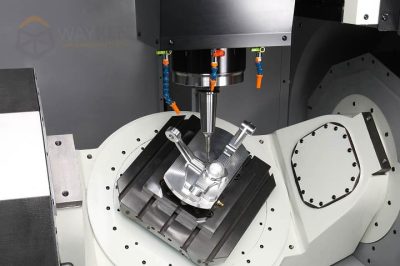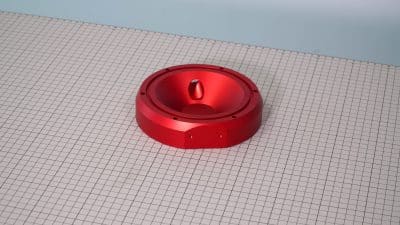When you hear the term “Mylar,” what comes to mind? Perhaps it’s that shiny, crinkly material used in balloons or food packaging. But Mylar is far more than just a decorative film—it’s a versatile, high-performance material that plays a critical role in a wide range of industries, especially the electronics sector. Whether you’re in engineering, manufacturing, or even art, understanding Mylar’s properties and its applications can unlock its potential in your work.
What is Mylar?
Mylar is the brand name for a type of polyester film made from polyethylene terephthalate (PET). Originally developed by DuPont in the 1950s, Mylar has since become one of the most widely used films due to its excellent physical properties. It’s transparent, durable, and resistant to stretching, making it ideal for various applications. Over time, the material has evolved, with various modifications enhancing its performance in specific fields, including electronics, packaging, and more.
But what makes Mylar so remarkable? Let’s dive into its characteristics.
Key Characteristics of Mylar
- High Strength and Durability
Mylar is well-known for its impressive strength-to-weight ratio. It’s tough and resistant to wear, which makes it ideal for applications where the material is subjected to stress, abrasion, or rough handling. Unlike many other plastics, Mylar does not easily tear or crack, even under significant pressure.
- Heat Resistance
One of the standout features of Mylar is its ability to withstand high temperatures without losing its structural integrity. It can endure continuous exposure to heat without degrading, which is why it’s often used in applications where thermal stability is crucial, such as in aerospace and electronics.
- Electrical Insulation
Mylar excels as an electrical insulator. It can resist electrical currents and is often used in devices where electrical components need to be isolated to prevent short circuits or failure. Its high dielectric strength makes it invaluable in components like capacitors and transformers, where insulating materials are essential.
- UV Resistance
Another key feature of Mylar is its ability to resist degradation from ultraviolet (UV) light. This makes it a go-to choice for applications that involve exposure to sunlight or UV rays, from outdoor signage to space equipment.
- Flexibility and Ease of Processing
Despite its strength, Mylar is highly flexible, which makes it easy to mold into various shapes and sizes. It can be cut, formed, and even laminated without compromising its strength. Its flexibility also makes it ideal for use in flexible electronics, such as wearable devices and foldable displays.
The Production Process of Mylar
Creating Mylar is a fascinating process that transforms raw polymer into a high-performance material. Here’s a breakdown of how it’s made:
- Polymer Preparation
The production of Mylar begins with the preparation of its polymer base—polyethylene terephthalate (PET). This involves a chemical reaction between ethylene glycol and terephthalic acid, producing a liquid resin. The resin is then cooled into solid chips.
- Melting and Extrusion
Next, these chips are heated to a melting point and extruded through a die to form a thin film. This stage is crucial because it determines the initial thickness of the Mylar film.
- Cooling and Stretching
After extrusion, the Mylar film is cooled and stretched in two directions—both lengthwise and widthwise—through a process known as biaxial orientation. This stretching aligns the polymer molecules in both directions, giving Mylar its strength and flexibility.
- Heat Treatment (Annealing)
To further stabilize the material, Mylar undergoes a heat treatment process. The film is subjected to high temperatures, which helps it maintain its dimensional stability even under stress or temperature fluctuations.
The result? A thin, tough, and flexible material with an array of desirable properties, ready for use in various industries.
Mylar’s Historical Development
The history of Mylar dates back to the early 1950s when DuPont scientists were experimenting with polyester films. In 1952, they successfully created Mylar, which was soon registered as a trademark. Initially, it was used for industrial applications, but as its capabilities became more widely known, Mylar expanded into consumer goods, packaging, and, most notably, the electronics industry.
Over the years, Mylar has been refined and modified to meet the demands of new applications. Today, it’s produced in various grades, each designed for specific uses—whether for high-temperature resistance in aerospace or chemical resistance in pharmaceuticals.
Thickness and Tensile Strength of Mylar
Mylar comes in a wide range of thicknesses, typically ranging from 12.7 microns (0.0005 inches) to 356 microns (0.014 inches). This variability makes it adaptable to different applications, from thin films used in capacitors to thicker layers used in packaging or insulation.
Its tensile strength is equally impressive. Mylar films can withstand forces up to 25,000 psi (pounds per square inch) before breaking, making it an excellent choice for applications that require high strength but minimal weight. Whether it’s used in flexible electronics or durable packaging, Mylar’s resistance to stretching and breaking is a key reason it’s favored by engineers and manufacturers.
Gas Barrier and Chemical Resistance
One of Mylar’s standout properties is its ability to act as a barrier to gases, moisture, and odors. This makes it an invaluable material in the food and beverage packaging industry, where it helps preserve the freshness of products by keeping out oxygen, water vapor, and carbon dioxide.
But its utility doesn’t stop there. Mylar is also highly resistant to a wide range of chemicals. In the electronics industry, where exposure to harsh chemicals can lead to equipment failure, Mylar’s chemical resistance ensures that sensitive components are protected, even in aggressive environments.
Mylar in Electrical Insulation and Gas Barrier Applications
Thanks to its low water absorption, high dielectric strength, and durability, Mylar is widely used in electrical insulation. It’s a primary material in capacitors, transformers, and motors, where it provides a reliable barrier between electrical components and prevents short circuits or power failures.
In the aerospace industry, Mylar is used for insulating cables, protecting sensitive equipment from electrical damage. Its low permeability to gases ensures that electronics remain safe even in the vacuum of space or at high altitudes.
Mylar’s role as a gas barrier also extends to applications in the medical and food sectors. It’s used to create moisture-proof packaging for medications, preserving their shelf life and ensuring their potency. Similarly, in the food industry, Mylar films help keep oxygen out, preserving the taste and texture of products for longer.
Mylar in the Electronics Industry
The electronics industry has found numerous uses for Mylar, and its applications continue to expand as technology evolves. Here are some of the most common uses:
- Cable and Wire Insulation
Mylar is frequently used to insulate cables and wires in electronic devices. Its high dielectric strength ensures that electrical signals are transmitted safely, while its toughness prevents wear and tear.
- Capacitors
In capacitors, Mylar serves as a dielectric material—helping to store electrical energy efficiently. Its high dielectric strength allows capacitors to be compact while still storing a large amount of energy.
- Transformers and Motors
In transformers and electric motors, Mylar is used to insulate the windings. This helps prevent short circuits and ensures that electrical currents are safely transmitted within these devices.
- Printed Circuit Boards (PCBs)
PCBs are the backbone of virtually every electronic device, and Mylar is often used as an insulating layer in PCBs. This helps prevent electrical short circuits and ensures the proper functioning of the circuit.
- Flexible Circuits
With the rise of wearable technology, flexible circuits have become an essential part of the electronics market. Mylar is a preferred material for flexible circuits due to its ability to bend and flex without losing its electrical insulating properties.



